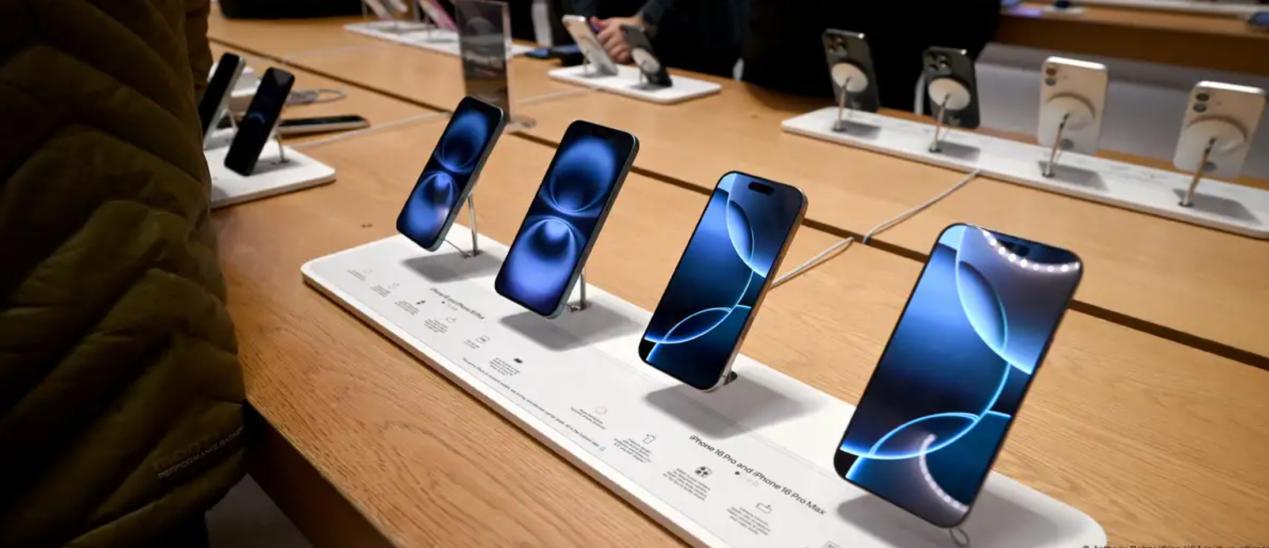
In May 2025, US President Trump publicly threatened via social media that if Apple did not manufacture iPhones in the United States, a 25% tariff would be imposed on its phones produced overseas. This statement quickly caused global market turmoil, with Apple's stock price dropping by 3.02% on the day and its market value evaporating by nearly a hundred billion dollars. This seemingly targeted threat against a single company actually reflects the deep contradictions in the US "manufacturing return" strategy and the vulnerability of the global technology supply chain.
The logic of the tariff threat: A political tool for manufacturing return
Trump's tariff policy is not an isolated incident but a continuation of his "America First" economic strategy. Since the beginning of 2025, the US government has repeatedly invoked the "International Emergency Economic Powers Act" to grant the president discretionary power to impose tariffs on the grounds of "national security." This pressure on Apple is essentially an attempt to use tariffs as a lever to force multinational companies to repatriate their supply chains to the United States. The Trump administration explicitly stated that if companies like Apple and Samsung moved their production to the US, they could be exempted from tariffs. This logic is similar to the 2018 US-China trade war: by increasing import costs, it forces companies to reevaluate their global layout.
However, the feasibility of this strategy is questionable. Apple's supply chain is highly dependent on Asia, especially China. According to statistics, 87% of iPhones, 80% of iPads, and 60% of Macs are produced in China, involving over 80% of the 200 major suppliers. If the production lines were moved back to the US, the cost of transporting components alone could increase by 30% to 50%, not to mention the lack of skilled workers and supporting industries in the US. Goldman Sachs estimates that if Apple were to bear the full cost of tariffs, its gross margin would decline by 3 to 3.5 percentage points; if passed on to consumers, the price of iPhones could rise by 35%, directly impacting demand.
Apple's Dilemma: Globalization Bonuses and Geopolitical Tensions
Facing the threat of tariffs, Apple finds itself in a dilemma. On one hand, it has accelerated the transfer of production capacity to India. By 2025, Indian factories are expected to produce 25 to 30 million iPhones, accounting for 32% of global production, an increase of 14 percentage points from 2024. However, the Indian supply chain remains highly dependent on Chinese components, with 70% of iPhone parts needing to be imported from China, resulting in costs for Indian factories being 5% to 10% higher than those in China. If tariffs are imposed, Apple will have to choose between "Made in India" and "Made in the USA": the former has controllable costs but high tariff risks, while the latter is politically correct but comes with soaring costs.
On the other hand, Apple's political ties with the Democratic Party have made it a target of Trump. For a long time, Apple has been a major source of political donations for the Democratic Party, and Trump's tariff threats are seen as retaliation for "political alignment". This political game further complicates the company's decision-making. Apple CEO Tim Cook has publicly stated that the company plans to invest hundreds of billions of dollars in the United States over the next four years, including purchasing American-made chips and servers, but it remains unknown whether this commitment will earn tariff exemptions.
The ripple effect on the global supply chain: Who will bear the cost?
Trump's tariff threats not only affect Apple but may also trigger a "global supply chain earthquake". If the United States imposes a 25% tariff on smartphones, other countries may follow suit, leading to an increase in global trade costs. Take the European Union as an example. Trump simultaneously threatens to impose a 50% tariff on EU goods, forcing the EU to launch a countermeasure list involving nearly 100 billion euros worth of goods. This "tariff confrontation" will further tear apart the global supply chain, compelling companies to reassess their regionalization strategies.
Consumers will ultimately foot the bill. If Apple passes on the tariff costs, the price of the iPhone 16 Pro in the US could rise from $999 to $1,349, and the top-of-the-line Pro Max model might exceed $2,300. Goldman Sachs estimates that a 43% price increase could lead to a 15% to 20% drop in iPhone sales. For developing countries that rely on smartphone exports (such as India and Vietnam), tariff barriers may undermine their opportunities for industrial upgrading and exacerbate global wealth inequality.
Conclusion: The "Prisoner's Dilemma" in the Age of Globalization
Trump's tariff threat against Apple is essentially a fierce collision between national interests and corporate interests in the age of globalization. There is no perfect solution in the trade-off between "manufacturing repatriation" and "cost efficiency". If the US forces the implementation of tariffs, it may accelerate the "de-Chinaization" of the global industrial chain, but it could also lead enterprises to shift production capacity to low-cost regions such as Vietnam and Mexico instead of returning to the US. The ultimate outcome of this game will depend on the complex interaction of political will, market response, and legal rulings. For global consumers, the price increase of smartphones may just be the beginning, and deeper industrial changes are brewing.

Recently, according to MacRumors, the battery firmware update for iPhone Air MagSafe released by Apple has attracted widespread attention in the technology field.
Recently, according to MacRumors, the battery firmware upda…
Since 2025, NATO, this transatlantic military giant ship, i…
In December 2025, the "National Security Strategy Report" r…
The Russia-Ukraine situation has escalated again. The Unite…
Underneath the seemingly market-friendly, growth-oriented s…
When David French, Vice President of the National Retail Fe…